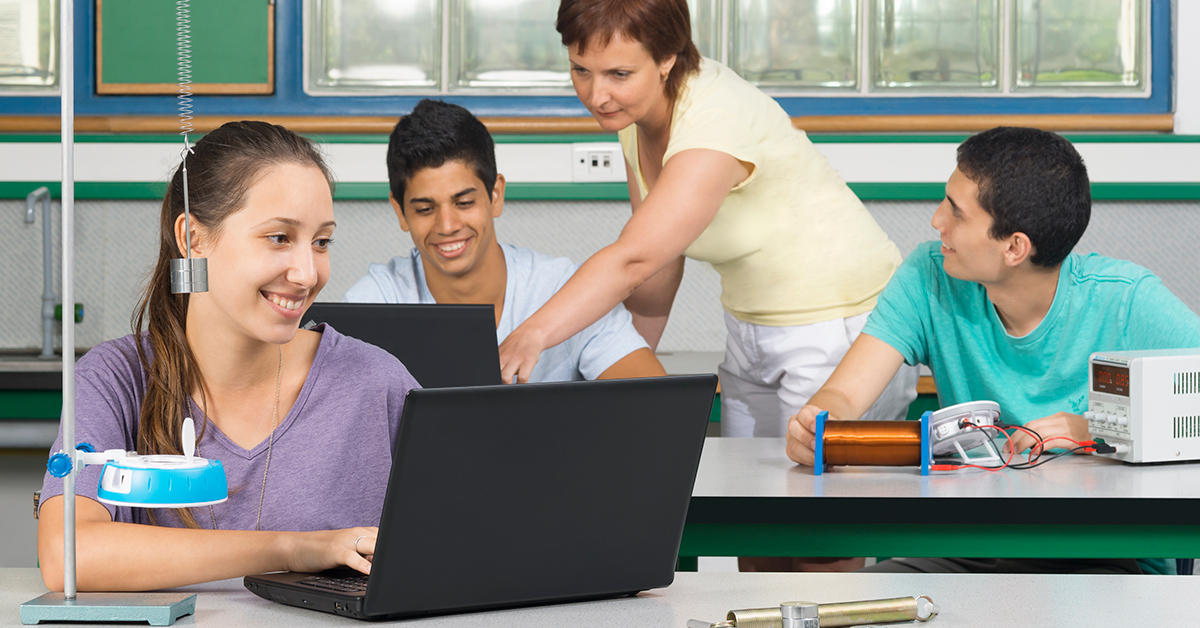
The drive for integrating more hands-on STEM activities and lessons that tap into and sharpen students’ critical thinking and problem-solving skills is high. Educators are trying to find and/or design lessons that students will be motivated by and further their interest in STEM learning. But with limited time and resources, this can also be one of the bigger challenges, and STEM is often limited to what is ‘left over’ after language arts and mathematics has taken the bulk of the focus.
There are more resources available for educators to integrate STEM that are hands-on, interactive, and can be developed into project-based lessons. Of course, this would require some time and effort for the educator to synthesize the resources and lay out a project that incorporates what students know and/or are learning in other subjects, as well as base it in real-life context for better connection. While the thought of seeing how excited students will become while working through a lesson, the energy invested can be exhausting and for some educators who are already pouring in time planning other subjects, not worth it...for now (‘maybe at the end of the year’).
Many educators have discovered that the Labdisc portable STEM lab has proven to be a flexible, easy-to-use, turnkey solution for integrating STEM in the classroom. The Labdisc portable STEM lab is a wireless, battery-operated compact data logger with 15 built-in calibrated sensors. It is a great exploration tool for conducting experiments anywhere, including outside of the classroom. The Labdisc comes with a library of lessons for all grade levels, many aligned with Next Generation Science Standards, that can be adapted according to the needs of the class. Some of the many Labdisc lessons included are:
Elementary
- Light Absorbency
- Our Heart Rate
- How Loud is Sound?
- Air Pressure
- Conductors and Insulators
- Coping with a Warm Environment
- Make Your Own Battery
- The Sun’s Effects
- Weather and Climate
- What’s the pHuss?
Middle/High School Biology
- Do Seeds Metabolize?
- Beer-Lambert Law
- Sweat Production
- Temperature Variation Between Night and Day
Middle/High School Chemistry
- Titration
- Endo/Exothermic Reactions
- Boyle’s Law
- How Acidic Are the Things We Drink?
Middle/High School Environmental Studies
- Water Quality
- Liquid Conductivity
- City Microclimate
- Photosynthesis – Dissolved Oxygen
Middle/High School Physics
- Earth’s Magnetic Field
- Newton’s Second Law
- Biot-Savart Law
- Ohm’s Law
Besides lessons and experiments, the Labdisc lesson library includes project-based learning activities such as:
- Project GLOBE where students build a weather station and use the Labdisc to collect data about weather conditions in the area
- Turn Down the Noise investigates the impact of noise pollution in the community so that data and information can be shared with school and community leaders to improve local conditions
- What’s It Like Out There? has students explore the environment via a high-altitude, near-space weather balloon to record temperature, air pressure, sound, and GPS location during the balloon’s ascent and descent
Educators have also turned to MyStemKits, a repository of standards-driven STEM lessons. This multi-award winning, all-in-one curriculum solution makes available resources like ready-to-print 3D models, STEAM design challenges, lesson plans for the MyBot robotics system, and lessons and activities for the Labdisc portable sensor. A few are listed below:
Labdisc and MyStemKits
- Project Nest Box – Real-world activity where students will learn about birds, weather, and the interactions between humans and the world around them.
- All Charged Up – Hands-on activity in which students explore battery voltage, including the history of batteries, its parts and functions, and how they work.
- Warning System Water Filter – Students use different filtering materials to design, build, and test various water filters, water filtration being an important aspect of maintaining good health during and after an extreme weather event.
- Planetary Thermometer – Students will model the effect the Sun has on the temperature of planets based on their distance from it and use data to explore the effect of light and heat, the impact of greenhouse atmosphere, and linear and nonlinear model based on planets’ temperatures.
Watch how the Labdisc was used for Boxlight STEM Day: Boxlight STEM Day - Labdisc
If you are an educator that uses Labdiscs regularly in your classroom, we’d love to hear from you! Please share your amazing experiences below or tag us with #LabdiscLessons.
To learn how the Labdisc portable STEM lab can amp up STEM learning in your classroom, go to boxlight.com/labdisc-portable-stem-lab.
To read how Labdisc has been used in different educational settings, read some school success stories by clicking here and searching -
- Labdisc Enviro Used Bilateral Collaborative Research Project
- Chile Raises the Nation’s Science Awareness
- Labdisc in Near Space
- Labdisc Proves Ideal for Inquiry-Based Science
- Labdisc Innovation and Quality Promote “Plan Ceibal” Core Values


